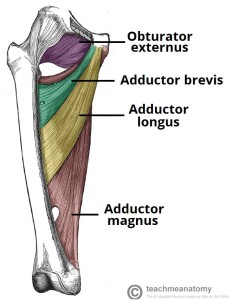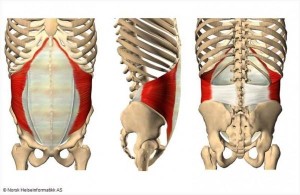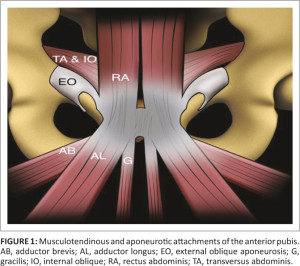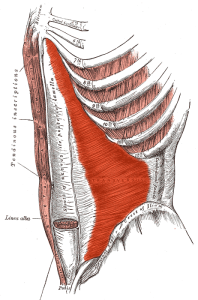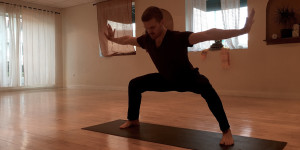I was an athlete for 15 years before I met my hips for the first time. It was in college and I had started taking pilates and yoga to help polish my running, swimming, and weightlifting. I was always “taught” about the hips in a broad not so specific manner, like during the dolphin kick when swimming, or during the extension of my hip at the top of a lift. Either way, my understanding of the pelvis was amateur at best, I knew I had one and that was it. I had no mental model of my pelvis, the hip muscles engulfing it, and had little to no understanding of how it related to my legs. Pilates and yoga was an abrupt awakening to how little I had spent on developing my hips and core. For our sake of conversation today, “core” will include muscles in the abdominals, hip flexors (to which there are many), glutes, and legs. Essentially your knees to your strenum.
Through the past decade of training people, I have learned a tremendous amount about the importance of developing long, strong, and functional hips. Lets face it, everybody wants to be more toned, and a lot of us want a stronger core (remember, legs, hips, glutes, but typically we think of ‘core’ as abdominals). However, a lot of this growth will be limited if you ignore the strengthening and lengthening training of your hips. This brings me to today’s discussion about our adductor group, a set of muscles that are so underused that this exercise may be the only hope for saving them!
Our adductors are your inner thigh muscles, and they adduct, or draw the femur inward. What’s more interesting is their relationship to our transverse abdominis (which we will visit in a bit). We have three adductor muscles; the adductor longus, brevis, and magnus. The large adductors help the action of “drawing in” with our legs. Once a much used muscle group due to horse-back riding for transportation and hunting, the adductors have become a long lost part of the equation in our biped functionality. Since we do not ride horses, they do not get used on a daily basis, if at all in the modern lifestyle. This is a real shame especially because of their synergistic relationship with the transverse abdominis (TVA), which I will discuss further.
I have included a video of ‘horse’ pose, an exercise you can do everyday to strengthen, lengthen, and assimilate your hips, glutes, and core better!
The three things to remember when doing horse: press the legs into your arms! breathe and every time you exhale pull your belly button closer to your spine! keep a neutral pelvis, or an arch on your low back (anterior tilt).
Your TVA is the deepest layer of your “core” abdominal muscle group. It is shaped like a corset, intended to keep your spine stable, and the communication between upper and lower extremities constant. The TVA tends to get less attention because it lacks the sexy-look of the rectus muscles (the six pack) and is more complicated to understand in terms of activation in comparison to your obliques (lateral flexion, or side crunching movement). However, when you get it working correctly, the results are astoundingly effective and something you feel immediately.
A quick anatomy lesson. Your adductors originate from a few places depending on which we are talking about. The brevis and longus originate at the inferior and superior ramus of your pubis (underneath your pelvis), whereas the adductor magnus originates on the ramus, ischiopubic ramus, and ischial tuberosity (bony landmarks on your pelvis). They all insert at the back of your femur, along a ridge of the bone called your linea aspera. Your TVA originates from the cartiledges of ribs 7-12 in the front, the thoracolumbar fascia in the back (which is right near the thoracolumbar junction, where lumbar and thoracic vertebrae meet), and anterior surfaces of the iliac crest (feel the sides of your waist to feel this area). It inserts three-dimensionally all the way around you, like a barrel…hence it is a ‘barrel shaped muscle’ (please note the fibers in the TVA are not barrel shaped, they are transverse or horizontal, just the epimysium encasing it is barrel shaped).
Okay- so what’s the significance of all this anatomy hoopla? It’s important to notice their proximity to one another on the pelvis (see image below, AL and AB are adductors, TA is transverse abd). This shows us a direct connection, a fascial continuum, between the torso and lower extremities. This alone has the power to make us to understand why we want to train them together, because they are essentially ‘connected’ (though not really, though sort of, not the place for this discussion).
So why do we want to do horse pose? Why do I want to train my adductors and TVA?
One is, from a standpoint of functionality, these muscles have got to be used! Because of lifestyles and lack of variety when training, both sets of muscles tend to get locked concentrically, short, (however, it is important to note that muscles also get locked eccentrically, locked long, which require a different approach to releasing). For the sake of discussion lets say locked short. This shortening leads to constant tension, which ultimately leads to additional compression on the structures around it. The more compressed a muscle or area of the body is, the more tensive the area becomes. So from that perspective, the area never gets “fed” or paid attention to, and gets harder and harder to bring back to neutral, or homeostasis. In my line of work I am searching for harmony and balance amongst the tissues in the body, so our adductors and TVA need to be used in a way that elicits that type of response.
Secondly, if we can build these muscles harmoniously, then the compartments around them will begin to function more optimally. The adductors are big players in hip length, as well as core strength. If we can get them to work, grow, and be fed oxygen than they will naturally start to open our hip and groin area up so that we can have improved connections to our leg, core, and glute muscles. The TVA is similar in a sense that if we can learn to train it, we will see improvements in our diaphragm belly breathing, length of our spinal muscles, and experience a more ‘uprightedness’ in our daily postures.
Third– from the exercise perspective, we will become more connected in our bodies, better conditioned, and experience a greater freedom of movement control if we have balance throughout our musculoskeletal systems. Example; having a short adductor will not allow you to maximize movement potential (like a strong hip hinge when picking something up) or apply efficient force transfer throughout the body. Not to mention that if one adductor is short than the other is most likely long! An underdeveloped TVA will leave you gasping for air doing anything cardio related and leave your spine feeling more unstable and grabbing other muscles to hang onto for support. The same rule applies, depending on where the shortness of the TVA is will determine where the locked long portion of the muscle is.
Lastly– your adductors and TVA work together to defy gravity and lift you out of your joints. Training these muscles will build new neuropathways in your brain and body to create more space on your inner hip joint that allows more space for your hips and belly muscles to grow into. Your TVA will help to create a sense of stability in your ribcage and vertebral columns so that you can experience strength from a deeper place in your body, rather than a superficially surfaced one.
This stuff isn’t easy to digest, but if practiced enough, you’ll start to figure out what it means to have a supportive core and stronger more stable legs. Do your horse pose and experience improved posture, less ‘tightness’, and a greater sense of your diaphragmatic breathing! Don’t be like me and 15 years later just meeting your hips. Get to know them now so you can learn to appreciate their full capacity and potential over your lifetime.
Find me if you have any questions and remember- the challenge is on you; every other day for one month. See what horse does for you. Notice how it improves your physique, performance, and movement!

